|
|
|
Sort Order |
|
|
|
Items / Page
|
|
|
|
|
|
|
| Srl | Item |
| 1 |
ID:
131882
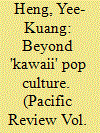

|
|
|
|
|
| Publication |
2014.
|
| Summary/Abstract |
Many studies of Japan's soft power are premised on the 'affective' dimensions of its kawaii pop culture that generate liking or interest. While entirely warranted, emphasising cultural attraction does not do sufficient justice to the multi-faceted foundations of Japanese soft power. Neither does it recognise other components of Joseph Nye's soft power framework stressing the 'normative' appeal of policies that reflect global norms. This article investigates the 'normative' dimensions of Japan's soft power on climate change, and whether it translates into international influence, as Nye predicted. The first section examines the Cabinet's 2010 New Growth Strategy, identifying a potential source of 'normative' soft power in its self-proclaimed desire to reinvent Japan as a 'trouble-shooting nation on global issues', specifically environmental challenges. Next, it analyses how Japanese entities (government, corporations, and NGOs) can transmit 'normative' soft power, and obstacles encountered. These transmission mechanisms include 'Cool Earth Partnership' programmes, the 'Future City Initiative' and the values-based Satoyama Initiative. The final section addresses conceptual implications that arise, and assesses whether Japan's 'normative' soft power has paid dividends. Drawing from literature on pioneer states and external reviews of Japan's alignment with key climate norms, the paper suggests that Japan's normative soft power is lacking in driving agendas at global climate forums. At a pragmatic problem-solving level, however, Japan is increasingly perceived as an attractive source of transferable solutions, reflecting climate norms such as developing eco-friendly technologies and providing assistance to help vulnerable countries mitigate climate change
|
|
|
|
|
|
|
|
|
|
|
|
|
|
|
|
| 2 |
ID:
132570


|
|
|
|
|
| Publication |
2014.
|
| Summary/Abstract |
After decades of isolation, Myanmar is now actively re-engaging with the global economy. For successful re-engagement, Myanmar needs to implement comprehensive economic reforms based on a shared vision of long-term economic development characterized by human-centred, sustainable, pro-poor, inclusive, high and balanced economic growth. In this paper, we propose five growth strategies: an "Agriculture Plus Plus" strategy; an export-oriented strategy; a foreign direct investment driven strategy; a two-polar growth strategy; and a domestic economic corridors development strategy. These strategies are used as guides to translate wide-ranging development agendas into a set of implementable policies, programmes, and projects.
|
|
|
|
|
|
|
|
|
|
|
|
|
|
|
|
| 3 |
ID:
127158
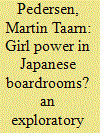

|
|
|
| 4 |
ID:
187464
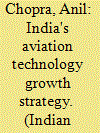

|
|
|
| 5 |
ID:
154336


|
|
|
|
|
| Summary/Abstract |
Possession of a brand is a sine qua non for economic success, not least because it connotes trust in delivering the value promised. Although Western arms exporters offer branded systems whose sales are influenced by price, there is a plethora of other economic variables, such as offset requirements and life-cycle support. Entrants to the international arms market will struggle without such arms “packages.” China’s entry, however, goes beyond the traditional economic paradigm. A four-stage historical model offers the backdrop for identifying the drivers that have forged its market entry into 55 countries worldwide. The strategy initially focused on sales of rudimentary military equipment for political purposes, but recently it has begun to commercialize exports, repositioning them from a low- to a high-tech sales trajectory. A Sino “brand” is thus emerging, reflecting both competitiveness and diplomatic considerations, especially non-interference in client state domestic affairs.
|
|
|
|
|
|
|
|
|
|
|
|
|
|
|
|
| 6 |
ID:
125282
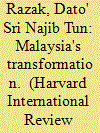

|
|
|
|
|
| Publication |
2013.
|
| Summary/Abstract |
Malaysia has one overarching and transformative policy objective: to achieve high income and developed nation status by the year 2020. High income nations, as defined by the World Bank, are those with a gross national income per capita of US$12,480 or more in 2011. Malaysia's per capita income now stands close to US$10,000 and the aim is to increase it to US$15,000 by 2020. My view is that developed nations should also meet a number of other important benchmarks. For instance, a nation's wealth must be reasonably distributed, not concentrated in the hands of the elite; physical and social infrastructure must be robust; and, most importantly, a developed country should be democratic and respect basic freedoms.
|
|
|
|
|
|
|
|
|
|
|
|
|
|
|
|
| 7 |
ID:
120951
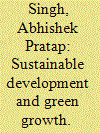

|
|
|
|
|
|
|
|